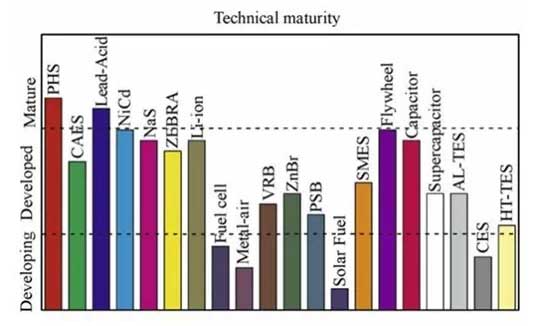Chemical energy storage: using hydrogen or synthetic natural gas as a secondary energy carrier, using excess electricity to produce hydrogen, you can directly use hydrogen as a carrier of energy, or you can react it with carbon dioxide to synthesize natural gas (methane), hydrogen or synthetic. In addition to being used for power generation, natural gas has other uses such as transportation. Germany is keen to promote this technology and has demonstration projects in operation.
Inadequacies: The full cycle efficiency is low, the hydrogen production efficiency is only 40%, and the efficiency of syngas is less than 35%.

Thermal energy storage: In a thermal energy storage system, thermal energy is stored in the medium of the insulated container, converted back to electrical energy when needed, or directly used instead of being converted back to electrical energy. Thermal energy storage is divided into sensible heat storage and latent heat storage. Thermal storage can store a large amount of heat, so it can be used to generate electricity from renewable sources.
Inadequacies: The heat storage requires various high-temperature chemical thermal working fluids, and the use occasions are relatively limited.




